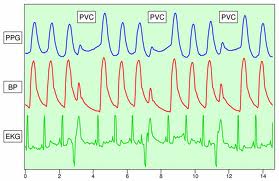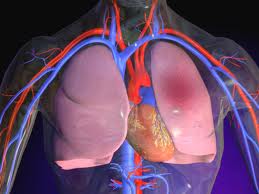Tension headache
Definition :
A tension headache is generally a diffuse, mild to moderate pain that's often described as feeling like a tight band around your head. A tension headache — or tension-type headache as it's medically known — is the most common type of headache, and yet its causes aren't well understood.
It may feel as if muscle contractions are responsible for your head pain, which is why this type of headache is generally referred to as a tension-type headache, though experts no longer think muscle contractions are the cause.
Fortunately, effective treatments for tension headaches are available. Managing a tension headache is often a balance between fostering healthy habits, finding effective nondrug treatments and using medications appropriately.
Symptoms:
Signs and symptoms of a tension headache include:
The headache is usually described as mild to moderately intense. The severity of the pain varies from one person to another, and from one headache to another in the same person.
Tension headaches can sometimes be difficult to distinguish from migraines, but unlike some forms of migraine, tension headache usually isn't associated with visual disturbances (blind spots or flashing lights), nausea, vomiting, abdominal pain, weakness or numbness on one side of the body, or slurred speech. And, while physical activity typically aggravates migraine pain, it doesn't make tension headache pain worse. An increased sensitivity to light or sound can occur with a tension headache, but these aren't common symptoms.
When to see a doctor
Make an appointment with your doctor
If tension headache disrupts your life or you find that you need to take medication for your headaches more than twice a week, make an appointment to see your doctor.
Even if you have a history of headaches, see your doctor if the pattern changes or your headaches suddenly feel different. Occasionally, headaches may indicate a serious medical condition, such as a brain tumor or rupture of a weakened blood vessel (aneurysm).
When to seek emergency help
If you have any of these signs or symptoms, seek emergency care:
Causes:
The exact cause or causes of tension headache are unknown. Experts used to think that the pain of tension headache stemmed from muscle contraction in the face, neck and scalp, perhaps as a result of heightened emotions, tension or stress. But research suggests that there doesn't appear to be a significant increase in muscle tension in people diagnosed with tension headache.
The most common theories support interference or "mixed signals" involving nerve pathways to the brain, which is demonstrated by a heightened sensitivity to pain in people who have tension headaches. Increased muscle tenderness, a common symptom of tension headache, may be the result of overactive pain receptors.
Triggers
It's likely other factors also contribute to the development of tension headaches. Potential triggers may include:
Complications:
Because tension headaches are so common, their effect on job productivity and overall quality of life is considerable. The frequent pain may make you feel unable to attend family and social activities. You might need to stay home from work, or if you do go to your job, you often work at only a fraction of your normal efficiency
Definition :
A tension headache is generally a diffuse, mild to moderate pain that's often described as feeling like a tight band around your head. A tension headache — or tension-type headache as it's medically known — is the most common type of headache, and yet its causes aren't well understood.
It may feel as if muscle contractions are responsible for your head pain, which is why this type of headache is generally referred to as a tension-type headache, though experts no longer think muscle contractions are the cause.
Fortunately, effective treatments for tension headaches are available. Managing a tension headache is often a balance between fostering healthy habits, finding effective nondrug treatments and using medications appropriately.
Symptoms:
Signs and symptoms of a tension headache include:
- Dull, aching head pain
- The sensation of tightness or pressure across your forehead or on the sides and back of your head
- Tenderness on your scalp, neck and shoulder muscles
- Occasionally, loss of appetite
The headache is usually described as mild to moderately intense. The severity of the pain varies from one person to another, and from one headache to another in the same person.
Tension headaches can sometimes be difficult to distinguish from migraines, but unlike some forms of migraine, tension headache usually isn't associated with visual disturbances (blind spots or flashing lights), nausea, vomiting, abdominal pain, weakness or numbness on one side of the body, or slurred speech. And, while physical activity typically aggravates migraine pain, it doesn't make tension headache pain worse. An increased sensitivity to light or sound can occur with a tension headache, but these aren't common symptoms.
When to see a doctor
Make an appointment with your doctor
If tension headache disrupts your life or you find that you need to take medication for your headaches more than twice a week, make an appointment to see your doctor.
Even if you have a history of headaches, see your doctor if the pattern changes or your headaches suddenly feel different. Occasionally, headaches may indicate a serious medical condition, such as a brain tumor or rupture of a weakened blood vessel (aneurysm).
When to seek emergency help
If you have any of these signs or symptoms, seek emergency care:
- Abrupt, severe headache, which may be like a thunderclap
- Headache with a fever, stiff neck, mental confusion, seizures, double vision, weakness, numbness or speaking difficulties
- Headache after a head injury, especially if the headache gets worse
- Chronic, progressive headache that is precipitated by coughing, exertion, straining or a sudden movement
Causes:
The exact cause or causes of tension headache are unknown. Experts used to think that the pain of tension headache stemmed from muscle contraction in the face, neck and scalp, perhaps as a result of heightened emotions, tension or stress. But research suggests that there doesn't appear to be a significant increase in muscle tension in people diagnosed with tension headache.
The most common theories support interference or "mixed signals" involving nerve pathways to the brain, which is demonstrated by a heightened sensitivity to pain in people who have tension headaches. Increased muscle tenderness, a common symptom of tension headache, may be the result of overactive pain receptors.
Triggers
It's likely other factors also contribute to the development of tension headaches. Potential triggers may include:
- Stress
- Depression and anxiety
- Poor posture
- Working in awkward positions or holding one position for a long time
- Jaw clenching
Complications:
Because tension headaches are so common, their effect on job productivity and overall quality of life is considerable. The frequent pain may make you feel unable to attend family and social activities. You might need to stay home from work, or if you do go to your job, you often work at only a fraction of your normal efficiency




















